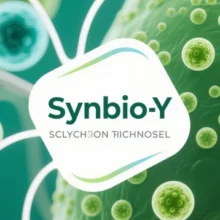
Comparative Analysis of Immunotherapy vs. Gene Editing Therapy (As of May 2025)
1. Core Mechanisms and Targets
Immunotherapy
- Principle: Activates or enhances the patient’s immune system to recognize and kill tumor cells, primarily through engineered T cells (e.g., CAR-T) or immune checkpoint inhibitors.
- Key Technologies:
- CAR-T Cell Therapy: Genetically modifies T cells with chimeric antigen receptors (CARs) to target tumor-specific antigens (e.g., CD19).
- Immune Checkpoint Inhibitors: Block pathways like PD-1/PD-L1 or CTLA-4 to counteract tumor-induced immune suppression.
Gene Editing Therapy
- Principle: Directly modifies disease-causing genes or regulates gene expression using CRISPR-Cas9, base editing, or other tools for root-cause intervention.
- Key Technologies:
- Gene Knockout/Knock-in: Disables immunosuppressive genes (e.g., PD-1, HLA) or inserts therapeutic genes (e.g., CAR sequences).
- Epigenetic Regulation: Uses dCas9 fusion proteins to methylate or acetylate specific gene promoters, altering expression levels.
2. Therapeutic Scope and Indications
| Aspect | Immunotherapy | Gene Editing Therapy |
|---|---|---|
| Primary Domains | Cancers (hematologic malignancies), autoimmune diseases (e.g., lupus) | Cancers, genetic disorders (sickle cell disease, hemophilia), cardiovascular diseases, metabolic diseases (diabetes), neurodegenerative diseases (Alzheimer’s) |
| Solid Tumor Progress | Limited; requires tumor microenvironment modification (e.g., IL-12 or CD40L injection) | Improved via multi-target editing (e.g., PD-1 + TGF-β receptor knockout) |
| Therapeutic Depth | Indirect intervention via immune system modulation | Direct correction of genetic defects or pathogenic pathways |
3. Advantages and Limitations
Immunotherapy
- Advantages:
- Maturity: FDA-approved for hematologic cancers (e.g., leukemia, lymphoma).
- Specificity: CAR designs enable precise tumor targeting, minimizing off-tissue damage.
- Limitations:
- Solid Tumor Barriers: Poor T-cell infiltration due to immunosuppressive microenvironments and antigen heterogeneity.
- Side Effects: High risk of cytokine release syndrome (CRS) and neurotoxicity.
Gene Editing Therapy
- Advantages:
- Precision: Targets single-base mutations (e.g., APOE4→APOE2) to address untreatable genetic defects.
- Versatility: Repairs genes (e.g., β-thalassemia) and enhances immunotherapies (e.g., universal CAR-T).
- Limitations:
- Off-Target Risks: Even high-fidelity editors (e.g., HypaCas9) have residual off-target rates.
- Delivery Challenges: Non-liver tissues remain difficult to target; blood-brain barrier penetration requires innovation.
4. Clinical Applications and Costs
| Metric | Immunotherapy | Gene Editing Therapy |
|---|---|---|
| Treatment Timeline | Long (4–6 weeks for autologous CAR-T production) | Short (“off-the-shelf” allogeneic CAR-T availability) |
| Cost per Dose | High (~$400,000 for autologous CAR-T) | Declining (CRISPR vector costs reduced from $10,000 to $500/dose) |
| Accessibility | Dependent on patient T-cell quality; excludes some candidates | Scalable universal products broaden patient eligibility |
| Durability | May require repeat infusions (e.g., 30% relapse rate in CD19 CAR-T) | Potential lifelong effects from single edits (e.g., VERVE-101 sustains LDL-C reduction >1 year) |
5. Future Synergies
Gene Editing Enhances Immunotherapy
- CAR-T Optimization: Knockout of PD-1, TCR, or HLA genes reduces immune rejection and boosts antitumor activity.
- Universal Cell Therapies: CRISPR-edited donor T cells enable scalable “off-the-shelf” CAR-T production.
Dynamic Control and Safety
- Logic-Gated Circuits: CAR-Ts activate only in tumor microenvironments (e.g., via KRAS mutation + p53 loss detection).
- Safety Switches: Incorporation of iCasp9 allows small-molecule control over aberrant CAR-T activity.
AI and Multi-Omics Integration
- Target Discovery: Combines single-cell sequencing and CRISPR screens to identify novel immune checkpoints or resistance genes.
- Delivery Innovation: AI-designed tissue-specific LNPs or AAV capsids improve editing efficiency and safety.
6. Ethical and Regulatory Challenges
| Aspect | Immunotherapy | Gene Editing Therapy |
|---|---|---|
| Ethical Concerns | CRS risks; cost-driven healthcare inequality | Germline editing debates; long-term safety uncertainties of off-target effects |
| Regulatory Framework | Mature (FDA’s RMAT, EMA’s ATMP pathways) | Evolving (e.g., FDA’s flexible endpoints in VERVE-101 Phase II trials) |
| Public Acceptance | High (urgency of cancer treatment) | Polarized (permanent genome alterations raise ethical questions) |
Conclusion
Immunotherapy and gene editing therapy are complementary:
- Immunotherapy excels in established indications (e.g., blood cancers) by activating immune responses.
- Gene Editing addresses root causes in genetic and complex diseases.
Over the next decade, their integration (e.g., CRISPR-optimized universal CAR-T) could transform oncology from disease management to one-time cures. Cost reductions and regulatory innovation will further enhance accessibility and safety.
Data sourced from public references. Contact: chuanchuan810@gmail.com.





